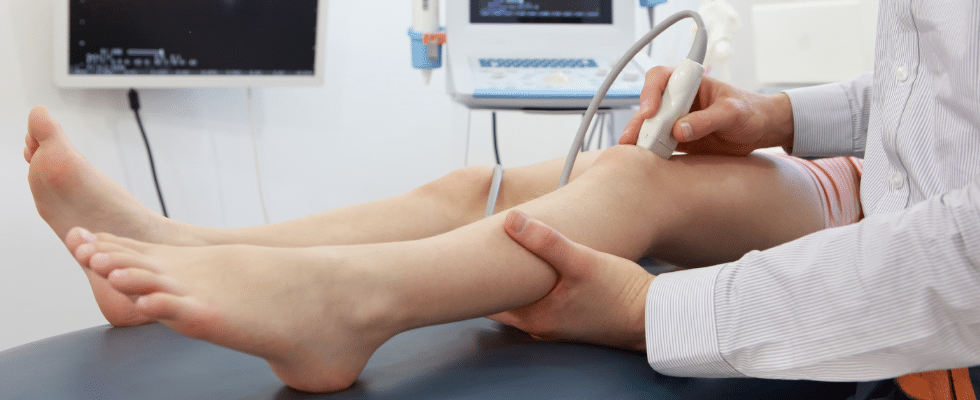
As Point of Care Ultrasound becomes more widely used, those who have been trained in using this technology, also referred to as POCUS, will be better able to diagnose and treat their patients. While many think of ultrasound only in the realm of obstetrics, POCUS can give great insight into what is taking place within a patient’s body, in real time, without transport and can give an ongoing view as different techniques or treatments are tried. One of the ways Maverick Medical Education uses POCUS with medical professionals is in the identification of knee dislocation.
Knee Dislocation vs. Patellar Dislocation
While the two are often used interchangeably, there are a number of differences between knee dislocation and patellar dislocation. Only making up 3% of knee injuries, according to the American College of Emergency Physicians, patellar dislocation refers specifically to trauma involving the patella bone and its detachment or misplacement from patellofemoral joint. Females experience this with higher frequency and there is a large recurrence rate, especially when sports are involved. According to ACE, “knee dislocation is a dislocation of the tibia with respect to the femur and is seen in high-energy traumas including motor vehicle accidents, falls from heights, industrial injuries, and [also] sports injuries”. These are much less common than patellar dislocations and often involve ligament issues as well.
Use of POCUS
POCUS is highly beneficial in these presentations for a number of reasons. For starters, determining if the injury is patellar or based in the knee will provide a better treatment and management plan, especially considering the high likelihood of a repeat injury with a patellar dislocation. Additionally, the knee can often reduce on their own, but the patient may still be experiencing pain or be injured in a way that needs treatment. POCUS ccan give a better view as to what may be felt. It is not uncommon for vascular injuries to arise and for nerve damage to be present, especially if the knee or patellar reduces on its own, out of place, which would need medical attention to fix.
Possible Outcomes
Whether further intervention is needed or reduction needs to be done by a medical professional, POCUS should be used after the treatment in order to monitor the patient. By evaluating the joints, ligaments, nerves, and muscles in question before and after the reduction or surgery has taken place, there can be more confidence in the prognosis. With the recommendation being for anteroposterior and lateral views post reduction, POCUS can achieve this imaging in the exam room to ensure proper placement has occurred. Additionally, in the event reduction occurred spontaneously, there could be fracture, widening spaces, or other issues that need the attention of the medical team.
To learn more about Point of Care Ultrasound and how it can assist your medical practice in knowing how to treat your patients more efficiently and completely, contact us today. Maverick Medical Education has a number of CE courses to provide the best care for your patients and community. Learn more by checking out our course catalog and sign up to begin learning right away.




